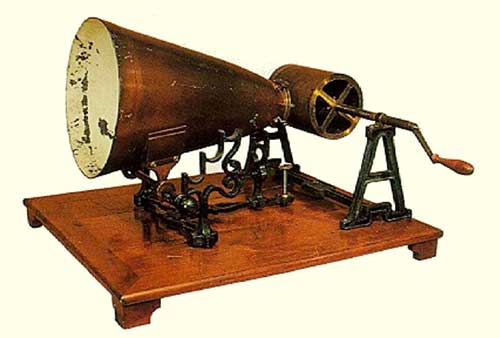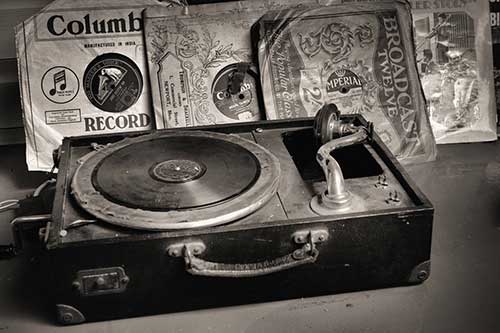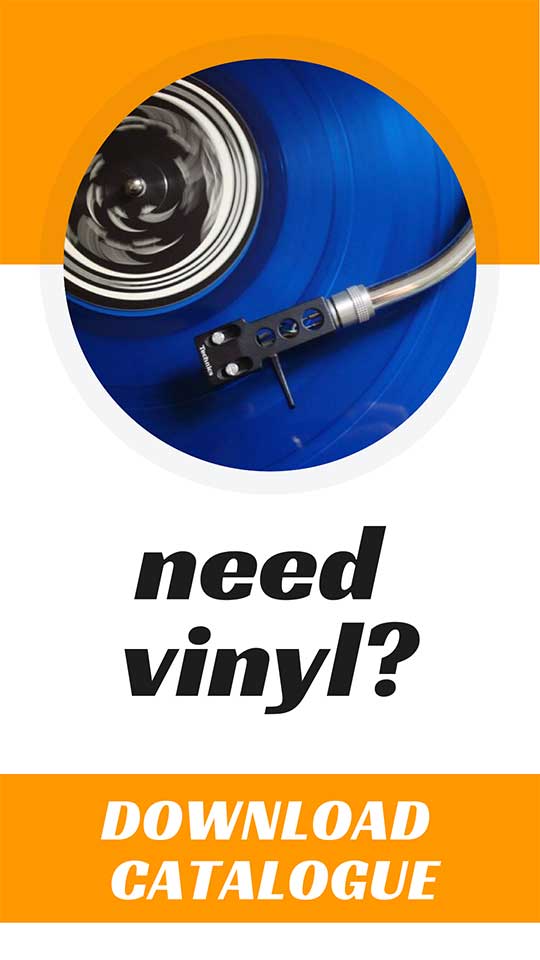Vinyl: When was the vinyl record created?
From mp3s, to SoundCloud links, all of modern music – and modern audio in fact – can trace its roots back to one thing, the vinyl record. But do you know when it was created, and how?
As with so much of the contemporary Western-world, its roots can be found in the technological and intellectual boom of the 19th century.
And, unsurprisingly, that same logic applies to modern audio. In 1857, French Inventor Edouard-Leon Scott created a specialist device which used a vibrating pen to graphically indent small paper discs. These indents represented sounds and the invention itself was known as a Phonautograph.
Some 20 years late, famed inventor Thomas Edison took this one step further and using a stylus that could cut grooves into metal cylinders and tinfoil discs.
This method became the basis for our modern record, and after years of refinement and advances in vinyl technologies, soon became the 12” vinyl we all now know and love.
If you don’t know your history, you are doomed to repeat it. The same thing can be applied to modern audiophiles. Do you know how audio first became of mass interest? And do you know why we owe it all to the Phonautograph?
When was the record created?
Much like most modern inventions, the creation of the record (as we know it anyway) is not a crystal-clear moment. However, the roots of our modern-day record can be traced all the way back to 1857 with French inventor Edouard-Leon Scott. Scott created a specialist device which used a vibrating pen to graphically indent small paper discs. These indents represented sounds and the invention itself was known as a Phonautograph.
How was the record created?
Scott’s desire when creating the Phonautograph was to study the characteristics of sound. Specifically, Scott wanted to understand their creation and representation i.e., how we understand them. This form of ‘records’, the small paper discs, existed for around 20 years until famed inventor Thomas Edison began to take an interest in them.
Edison elevated Scott’s idea by turning the phonautograph into a machine that could replay sounds that it had recorded. It would do this by utilising a stylus which would cut grooves onto metal cylinders and discs made of tinfoil. From this stage onward, the record began to become more recognisable by modern standards.
Some 70 years late, the vinyl LP was first created in 1948, and soon enjoyed a ‘golden age’ of popularity right up to the 1990s. However, with the advent of technological advancement, and the mass production of cheaper musical alternatives, such as Philip’s Cassette tape, vinyl LP’s mass-popularity did not last.
In 2020, vinyl, is having somewhat of a revival due it’s purity and warmth of sound, compared to contemporary alternatives. But, the term LP, is now firmly accepted as a measurement of length rather than a specific type of vinyl record
What does a record look like?
Originally, a record was a black disc (although the colour can change), between 12 inches (30cm) and 10 inches (25cm) in diameter. However, there have been variations in the sizes of records throughout the years. On these disks are indentations known as grooves – these are a representation of how the sound waves move during the audio’s playout.
Each vinyl record disc is then stored in a commemorative record sleeve. These sleeves were the original platform for album artwork.
In 2020, a record can take on many forms. Most popularly, it is in the shape of a compact disc (CD), held within a band’s album case. However, many people only own albums digitally and never seen a physical copy of the disc.
On the vinyl record itself, it will have three-dimensional grooves cut into the disc material. The record player’s needle, or stylus, will the run over these grooves, creating an electric current that is amplified through the attached speakers. This disc will rotate at 33 1/3 rotations per minute.
Upon first release, these vinyl discs were a commercial flop. These has been attributed to the Great Depression, as well as a lack of consumer playback equipment. Essentially, people could not afford to buy the record and/or the technology used to play it. However, in 1948, Columbia Records introduced the 12” Long Play (LP) 33 1/3 rpm microgroove record. This made the product much more accessible for the general public.
Nowadays, many record collectors and musicians claim the sound from a LP is far superior to anything else. This is due to the “warmness” of the vinyl’s sound, compared to digital transmitted music, which can be found, for example, in Bluetooth speakers and the like.
Hope that was fun read!
Thanks,
Rory
Get ready for your CD release!
Download our FREE pdf guide and be on the sure path to release your CD successfully.
Download pdf guideYou might also like:
Includes PR companies, UK promoters & UK booking agents. Everything you need to put your band on the map.







